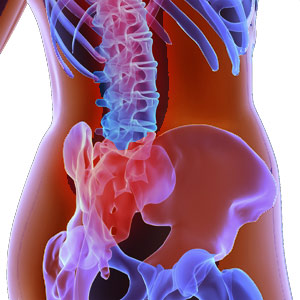Borderline Personality Disorder Women

Borderline personality disorder (BPD), is a serious mental illness, though less commonly known than schizophrenia or bipolar disorders. It is a form of pathology lying on the border between psychosis and neurosis.
According to an estimate by the American Psychiatric Association, about six million people in North America have BPD. It is estimated to affect close to 2% to 14% of the general population in the US. This disorder appears to affect more women than men. And this disorder seems common among biological relatives of the victim.
What is BPD?
BPD is characterized by a serious mental illness prominently characterized by instability in moods, interpersonal relationships, self image and behavior. As a result, BPD disrupts families, work life and the individual sense of self identity as well. It is a disorder of emotional regulation, as a result of which the victim injures himself/herself with or without suicidal intent.
Symptoms of BPD
Persons with borderline personality disorder often exhibit intense bouts of anger, depression and anxiety. This may last for hours or sometimes a day. Impulsive aggression, self injury, abuse of drug and alcohol are some other symptoms.
BPD sufferers primarily see the world as extremes, either black or white. They either idealize or vilify everyone they meet. They veer between idealized love and distressing hatred and misery. They are known to develop sudden and stormy attachments toward family, friends and loved ones. Their emotions range from great love to intense hatred.
This is a disorder of emotion regulation and instability resulting in disruption of family and work life and the sense of individual self-dignity as well.
Victims of BPD feel misunderstood, bored and empty and isolated, lacking social support. Hence they avoid being alone and jump into relationships, though unstable. BPD patients exhibit impulsive behavior patterns such as excessive spending, binge eating and risky sex. BPD occurs with other problems such as bipolar disorder, depression, anxiety neurosis, substance abuse among other psychiatric problems.
Causes of BPD:
Studies reveal that BPD like most psychiatric disorders is caused by a combination of environmental, biological and genetic factors.
- The causes of borderline personality disorder could be environmental. Evidences suggest a strong link between:
- distressing childhood experiences,
- physical and sexual abuse,
- early separation from family
- emotional or physical neglect and abuse by caretaker
- parental insensitivity at times.
- distressing childhood experiences,
- Marsha Linehan, the developer of Dialectical Behavior Therapy attributes that BPD could be caused by an interaction between biological factors and an 'emotionally invalidating' childhood environment.
- BPD can be caused by genetic and biological causes as well. Early studies reveal that BPD tends to run in families but they are not conclusive. In particular, a variation in a gene controls the way the brain uses serotonin which may be related to BPD. Individuals with
specific variation of serotonin gene may develop BPD if they also experience childhood trauma.
- People with BPD exhibit more activation of the limbic system, which is the area in the brain that controls fear, anger and aggression. Hence people with BPD are emotionally unstable. Excessive activity in parts of the brain control experience and expressions in emotion, as found in BPD patients.
- Persons who are highly physically sensitive to emotions are vulnerable to suffer from BPD.
- Another biological cause for BPD is difficulty in modulating emotions. This means the patient would find it difficult not to act immediately in response to strong emotion and his/her actions could be destructive.
Tests for borderline personality disorder
BPD is often thought to be one of the most common personality disorders - controversial because it is difficult to diagnose. Classic symptoms of the disorder include intense fear and emotional intensity, impulsivity and mood swings, obsessive ruminating, paranoid distortions and self-destructive behavior.
A thorough psychological evaluation of the patient is done to diagnose BPD based on signs and symptoms. Normally, any person meeting the criteria spelled out in Diagnostic and Statistical Manual of Mental Disorders is diagnosed as suffering from BPD. This manual which is published by the American Psychiatric Association is used by mental health professionals to detect mental conditions and by insurance companies to reimburse for treatment. For diagnosis of BPD, five signs should be significantly present:
- Sense of intense fear and abandonment.
- Pattern of unstable relationships
- Unstable self image
- Impulsive and often self destructive behavior
- Erratic mood swings
- Chronic feelings of emptiness
- Inappropriate and undue anger
- Periods of paranoia and loss of contact with reality.
Usually, the diagnosis of BPD on these parameters is done on adults and not on children as signs and symptoms of BPD may go away with maturity.
Therapy for borderline personality disorder
Psychotherapy which is considered the ideal choice in the treatment of personality disorders can be applied on patients with BPD.
Many victims of BPD entertain suicidal tendencies and this should be the first serious concern for any therapist. The risk of suicide and self mutilation are carefully assessed and monitored during the entire course of treatment.
Borderline personality disorder needs structured, regular and consistent treatment. The patient must be encouraged to talk calmly about his/her feelings and problems. They should not rage or cry through it. This disorder needs help on learning new coping skills with impulsivity and emotion regulation. Therefore hospitalization may be necessary for some patients with BPD.
The normal tendency is to discriminate against BPD patients because they are viewed as 'trouble makers' who are impossible to treat. Since BPD victims could be alcoholics or drug addicts, it is mandatory that they are treated for alcohol and drug abuse problems before psychotherapy is initiated on them.
Anti depressants and anti psychotic medications and mood stabilizers are prescribed for BPD. These help to increase the amount of neurotransmitter serotonin available with the brain. This medication also eliminates emptiness, most mood swings, chronic anger, emotional trauma and boredom within a couple of days of consumption. Tablets like Vitamin B are sometimes given as about 20% of patients are found to suffer from deficiency of this vitamin.
Stress reduction techniques such as exercise and relaxation techniques are suitably adopted to treat people with BPD. These are patients who have issues with self esteem and they need therapy to help build their self esteem.
As with any other illness and disorders, different individuals experience different BPD and therefore treatment should be adapted to suit individual conditions and constraints. The therapist needs to understand the patient and his/her family circumstances prior to treatment.
Individuals suffering from this disorder can be encouraged to gain additional social support. It is heartening to see that BPD treatments have improved in recent years. Individual or group psychotherapy treatments are at least partially effective for many patients.
Borderline personality disorder children
In recent times the mental health community has recognized that BPD may occur in children too. A child's explosiveness and impulsive behavior, intense rage, hostility, oversensitivity and overreaction, inaccurately interpreting conversation around him/her and misperceiving things and self injurious behavior like cutting, burning or substance abuse may be signs of BPD.
BPD in children is exhibited most commonly as attention deficit disorders. Depression especially with psychotic features, generalized anxiety disorder, panic disorder, post traumatic stress disorder, bipolar disorder and obsessive compulsive disorders are observed in children with BPD.
It is suggested that since most of the diagnoses for a child are genetic, the biological parents can do a screening test for themselves. This can help prioritize the treatment options especially for smaller children.
Borderline personality disorder women
BPD is predominantly diagnosed in females and it is estimated to affect about 2% of adults, mostly young women. The approximate female male gender ratio for this disorder is 3:1. Women and men present different symptom patterns for BPD. For instance, the criterion of identity
disturbance tends to be significantly common among women. Biologically, men show more aggression and externalize their behavior patterns but women often show more behavioral inhibition and internalize.
- Sexual abuse which is common in childhood histories of the girl child.
- Women tend to be more vulnerable to BPD and they are socialized to be more dependent on others. They experience more inconsistent and invalidating messages in the society.
- Women are more sensitive to rejection.
- While men seek psychiatric help less often, clinicians tend to be biased based on gender and they diagnose more BPD more often in women than in men.
- Since BPD is assumed to be a women's disorder, most of the times, men are treated only for alcoholism and substance abuse and their symptoms of BPD go unnoticed.
- While female borderlines are in the mental health system, many male borderlines are in jail.
Borderline personality disorder relationships
Persons suffering from BPD are 'relationship destroyers,' as they create the most damage to social and personal relationships, abusing,
manipulating and playing to lose with their partners, friends and family. Their relationship patterns are fleeting, black and white, hot or cold and they are unrelenting in times of crises.
Most of the interpersonal relationships of BPD are particularly unstable. In romantic relationships they are controlling, abusive and manipulative partners. As parents, they abuse, neglect, ignore and psychologically damage their children. As friends, they are irresponsible, selfish, unreliable, and dishonest and often create significant problems in their lives.
Living with borderline personality disorder
- It should be understood that BPD is an illness and the person is a sufferer. Do not hold their behavior against them.
- Learn to recognize the symptoms of BPD versus other personality traits.
- Learn to be compassionate to the victim and forgive the person for his/her irrational behavior as this is an illness that completely goes away if sincere personal efforts are taken.
- Living with a person suffering from BPD would become much harder if you do not find balance within yourself first.
- As living with a person with BPD can be exhausting over a period of time on many different planes, take time to regroup and break from the present living situation.
- It is essential to participate in therapy sessions for the victim. It would be better to find a therapist who has experience counseling people who suffer from BPD and their family and friends. Always be honest with the therapist and learn new coping skills.
Top of the Page: Borderline Personality Disorder Women
Tags:#borderline personality disorder #borderline personality disorder symptoms #borderline personality disorder treatment #borderline personality disorder test #living with borderline personality disorder #borderline personality disorder children #borderline personality disorder relationships #borderline personality disorder women

Endocrine Disorder
Thyroid Disorder
Adrenal Fatigue Syndrome
Generalized Anxiety Disorder
Panic Disorder
Borderline Personality Disorder Women
Binge Eating Disorder
Dysthymic Disorder
Chronic Fatigue Syndrome
Lyme Disease
Diet and Kidney Disease
Anorexia Nervosa
Sarcoidosis Disease
Other health topics in TargetWoman Women Health section:
General Women Health

Women Health Tips - Women Health - key to understanding your health ...
Cardiac Care
Women's Heart Attack Symptoms - Identify heart problems...
Skin Diseases
Stress Hives - Red itchy spots ...
Women Disorders
Endocrine Disorder - Play a key role in overall wellbeing ...
Women's Reproductive Health
Testosterone Cream for Women - Hormone replacement option ...
Pregnancy
Pregnancy - Regulate your lifestyle to accommodate the needs of pregnancy ...
Head and Face
Sinus Infection - Nearly 1 of every 7 Americans suffer from ....
Women and Bone Care

Slipped Disc - Prevent injury, reduce pain ...
Menstrual Disorders
Enlarged Uterus - Uterus larger than normal size ...
Female Urinary Problems
Bladder Problems in Women - Treatable and curable ...
Gastrointestinal Disorders
Causes of Stomach Ulcers - Burning feeling in the gut ...
Respiratory Disorders
Lung function Test - How well do you breathe ...
Sleep Management

Insomnia and Weight Gain - Sleep it off ...
Psychological Disorders in Women
Mood swings and women - Not going crazy ...
Supplements for Women
Women's Vitamins - Wellness needs...
Natural Remedies

Natural Diuretic - Flush out toxins ...
Alternative Therapy
Acupuncture Point - Feel the pins and needles ...
Top of the Page: Borderline Personality Disorder Women
Popularity Index: 101,922

